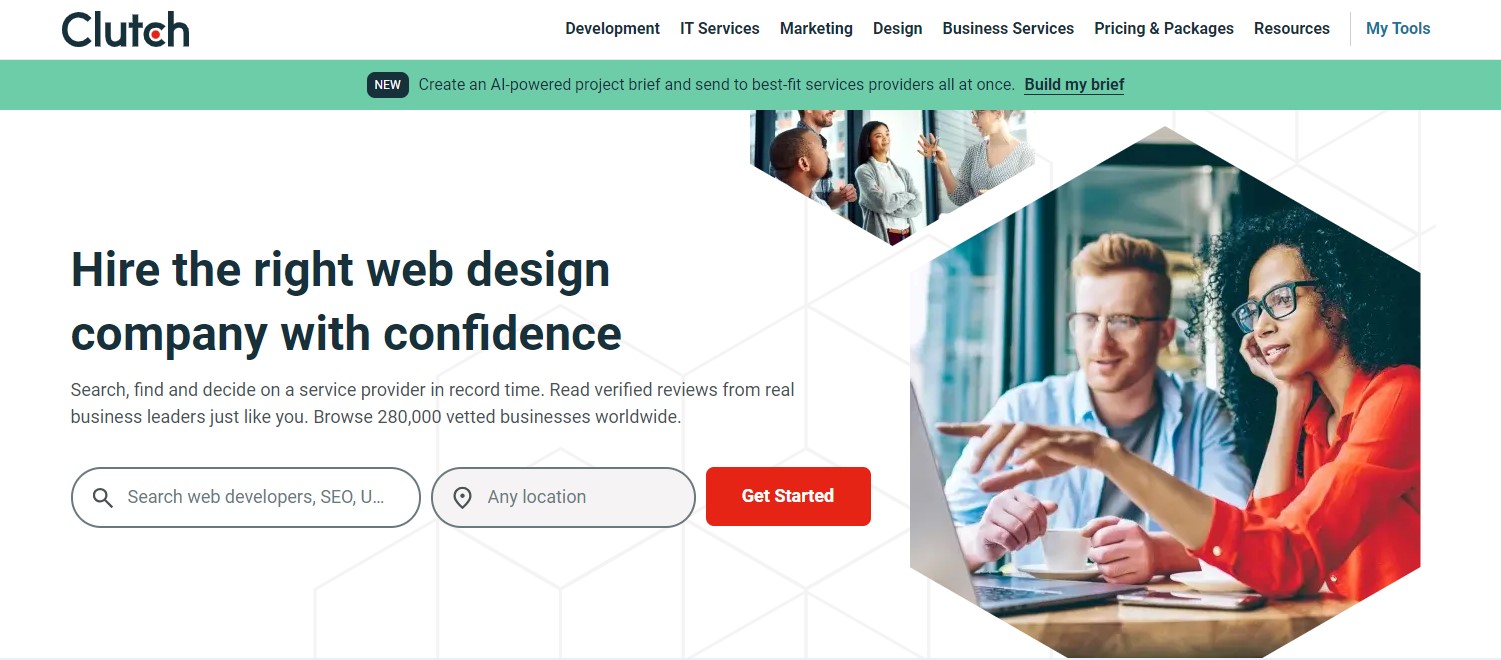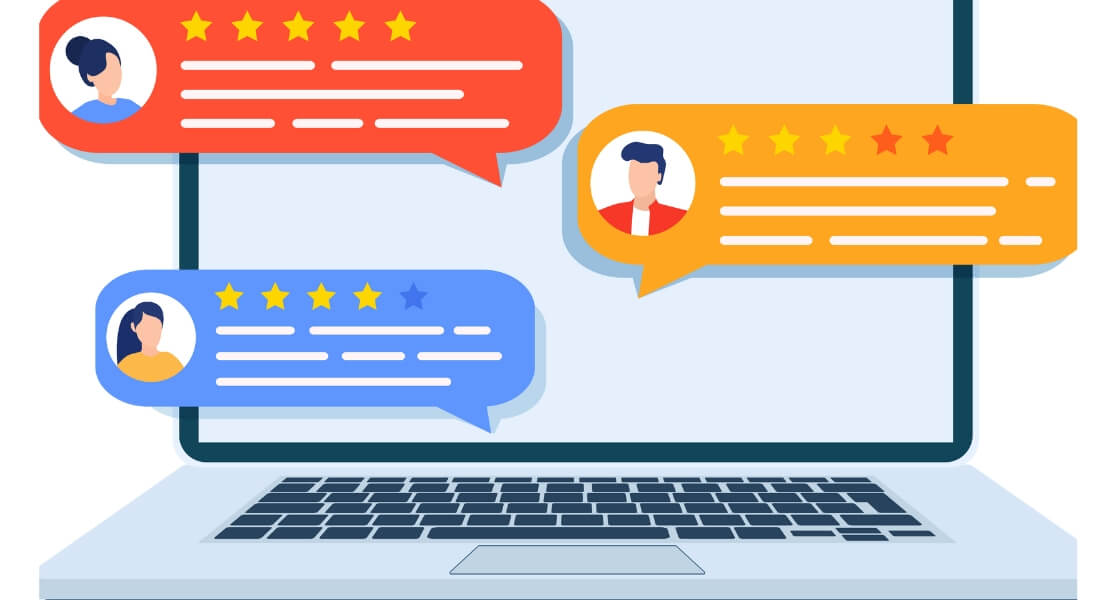Are you considering giving your website a fresh look, or perhaps creating a new one entirely, but find yourself constrained by time, budget, or expertise? You might want to outsource web design.
But how do you navigate the complex world of web design, especially if it’s not your area of expertise?
In this blog post, we’ll guide you through everything you need to know about outsourcing web design. From understanding the myriad benefits like saving time, reducing costs, and accessing a global pool of talent, to the practical steps of finding and working with the right designer or agency.
Contents
3 Main Benefits of Outsourcing Web Design
Outsourcing web design isn’t a one-size-fits-all solution, but in many scenarios, it offers distinct advantages that are hard to overlook.
1. Saving Time
Imagine the countless hours typically spent in the intricate dance of recruiting — sifting through resumes, conducting interviews, and the endless back-and-forth. Outsourcing web design elegantly sidesteps this time-consuming process, freeing you up to focus on what you do best: running your business.
But the benefits don’t stop at mere time-saving. When you outsource, you’re not just delegating tasks; you’re accessing a global pool of talent, ripe with seasoned web designers who bring a wealth of experience and creativity to your project.
These experts, adept in the latest design trends and technologies, can turn around stunning, functional websites in a fraction of the time it would take to onboard a new employee. This speed doesn’t come at the cost of quality, rather it’s the result of their honed skills and focused expertise.
2. Saving Money
The traditional route of hiring full-time in-house designers comes with a hefty price tag. Salaries, benefits, and the ongoing costs associated with employees can quickly deplete your budget.
Outsourcing changes this dynamic. It opens the door to a world where skilled web designers offer competitive rates that are often a fraction of the cost of their domestic counterparts. This cost difference is especially pronounced when you look to regions with lower living costs.
The financial benefits of outsourcing web design extend beyond just labor costs. Think about the overheads associated with maintaining an in-house team: office space, equipment, software licenses, and not to mention, the often overlooked costs like insurance and benefits. Each of these is a line item on your budget, each a potential saving when you opt to outsource.
3. Access to Experts

Web design is a field in constant flux, with new trends, technologies, and best practices emerging regularly. Maintaining an in-house team that’s up-to-date on all these fronts can be a daunting, resource-intensive task.
Outsourcing agencies, especially those specializing in web design, operate at the heart of these changes. They invest in continuous learning and development to stay competitive, ensuring that their team is not just current but also forward-thinking.
By tapping into this resource, you benefit from expertise that’s always ahead of the curve, incorporating the latest trends and technologies into your website without the need for you to invest time and money into ongoing training and development.
When Should You Outsource Web Design?
Deciding when to outsource web design is pivotal. It’s not just a logistical decision but a strategic one that can significantly impact the effectiveness and efficiency of your business’s online presence. Here are several scenarios where outsourcing becomes not just an option, but the optimal choice:
- Need for Specialized Skills: Complex projects often require niche expertise, such as e-commerce integration, user interface design, or animation. Outsourcing connects you with agencies and individuals who specialize in these areas, offering a level of proficiency that’s hard to find locally.
- Time Pressure: When the clock is ticking, and you need your website live yesterday, outsourcing teams, known for their efficiency and streamlined processes, can expedite your project’s completion.
- Budget Limitations: For small projects or businesses watching their finances, outsourcing offers a cost-effective solution. You get access to world-class design without the overhead costs of full-time employees.
- Fresh Perspective: Sometimes, what a project needs is a new set of eyes. External teams bring fresh, unbiased perspectives, often leading to more innovative and creative web solutions.
How Much Does It Cost to Outsource Web Design?
While costs can vary widely, here are some ballpark figures to give you a general idea of what to expect:
Generally, for a basic website, costs can range from $500 to $5,000. More complex sites, like e-commerce stores, might cost between $3,000 and $30,000. For large, highly customized corporate websites, prices can soar from $20,000 to over $50,000.
Here’s an overview of the key factors that influence the cost of websites.
- Project Complexity: The more complex your website, the higher the cost. A simple informational site with a few pages will cost significantly less than a detailed e-commerce platform with hundreds of products, custom functionalities, and interactive features.
- Designer/Agency Experience: Generally, the more experienced and reputable the designer or agency, the higher their rates. While opting for a less experienced designer can save money, it’s crucial to balance cost with the quality and reliability you need.
- Location: The geographic location of your web design partner can significantly impact costs. Agencies in countries with lower living costs often charge less than those in high-cost areas. However, consider factors like time zone differences, language barriers, and cultural nuances when outsourcing internationally.
- Additional Services: If you need extra services like copywriting, SEO optimization, branding, or ongoing maintenance, expect the costs to increase accordingly. These services add value but also complexity and time to the project.
- Number of Revisions: Some designers or agencies offer a set number of revisions, while others may offer unlimited revisions for a higher fee. Understand how revisions are handled and budget for potential additional costs if your project requires extensive tweaking.
While the cost to outsource web design varies widely, understanding your project’s complexity, the experience level you require, location factors, additional services needed, and the revision policy will help you budget more effectively.
How to Outsource Web Design Effectively

Step 1: Define your goals and needs
Begin by asking the core question: What is the primary objective of your website? Are you looking to sell products, provide information, or showcase a portfolio?
Your website’s purpose will significantly influence its design, structure, and content. A clear understanding of what you want to achieve will guide your decisions and help communicate your vision to potential designers or agencies.
What functionalities are essential for your website? Perhaps you need an e-commerce platform, an interactive booking system, or a dynamic portfolio display. Identifying these requirements early on is vital.
It helps in selecting a designer or agency with the specific skills and experience needed to bring these elements to life. Be as detailed and precise as possible; this will minimize misunderstandings and ensure you’re on the same page from the start.
Step 2: Set your budget and timeline
Once you’ve defined your goals and needs, the next pivotal step in effectively outsourcing your web design is to establish a realistic budget and a clear timeline. This isn’t just about numbers and dates; it’s about aligning your expectations with reality and setting a framework within which your project can successfully unfold.
Get an idea of what web design services cost by researching online or asking for quotes from multiple agencies or freelancers. This will give you a ballpark figure to start with. Don’t just account for the initial design and development. Consider ongoing costs like hosting, maintenance, updates, and potential future expansions.
Instead of a fixed number, consider setting a budget range. This allows some flexibility to accommodate unforeseen expenses while keeping your financial boundaries in mind. Even with the best planning, unexpected challenges can arise. Be prepared to adjust your budget or timeline as needed.
Step 3: Research and shortlist candidates
You can begin making your list of candidates by searching on Google. Start with detailed keywords that match your project’s specific needs. This might be “responsive web design for small businesses” or “custom web design for online stores.”

Once you have a broad idea from Google, refine your search through business listings. Platforms like Clutch, CrowdReviews, and Sortlist offer a more curated approach. Use the filters these platforms provide to find agencies that fit your criteria. Pay close attention to verified reviews and ratings.
Finally, nothing beats personal recommendations when it comes to reliability. Reach out to colleagues and professional connections who’ve undertaken similar projects. Their referrals can lead you to trusted partners.
Remember, a perfect fit for one project might not be right for another. Always cross-check referrals against your defined needs and preferences.
Step 4: Review portfolios and experience
Once you’ve shortlisted potential candidates, the next critical step is to dive deep into their portfolios and experience. This stage is where you assess their capability and fit for your project based on their past work and expertise.
Seek out projects in the portfolio that are similar to what you’re envisioning for your own website. This could be in terms of industry, style, or functionality. Consider how well the designer’s style aligns with your brand’s identity. You want a website that feels like a natural extension of your brand, so it’s important that their design sensibility matches your brand’s aesthetic and values.
Check if they have experience with the technologies relevant to your project. For instance, if you need an e-commerce site, do they have experience with e-commerce platforms like Shopify or Magento?
Experience in your specific industry can be a huge plus. It means the designer understands your target audience and competitive landscape.
Look for experience in projects of similar size and complexity to yours. If you’re a small local business, a designer who typically works with large international corporations might not be the best fit, and vice versa.
Step 5: Read reviews and references

After narrowing down candidates based on their portfolios and experience, the next crucial step is to delve into what others are saying about them. Reviews and references are invaluable for gaining insight into a designer’s reliability, quality of work, and the experience of working with them.
Look for testimonials that speak to the same needs or challenges you’re facing. General praise is good, but specifics about effectiveness, problem-solving, and meeting deadlines are more valuable. Remember that every review has a context. What might have been a deal-breaker for one client might not be as relevant to your situation.
While one negative review might be an outlier, several saying the same thing could indicate a pattern. Similarly, consistent praise in certain areas likely reflects a genuine strength. Pay particular attention to recent reviews, as they are more likely to reflect the current state of the designer’s or agency’s service quality.
Step 6: Conduct interviews and tests
Once you’ve read through reviews and references and are confident in your shortlisted candidates, the next step is to engage with them directly. Interviews and tests are your opportunity to understand not just what they can do, but how they do it and whether they’re the right fit for your project.
Before the interview, prepare a list of questions that cover everything from their experience and process to how they handle challenges and deadlines. Pay attention to how well they listen and respond to your queries. Are they clear, concise, and understanding? Do they offer insights or suggestions based on their experience?
For top candidates, consider giving them a small, paid test project. This can be a simple design task related to your project. The goal is to see their work in action and understand how they handle deadlines, feedback, and communication.
Step 7: Draft a clear contract

So, you’ve chosen the perfect partner. But don’t get too excited just yet. Before getting them on board, you need a contract first.
A well-drafted contract is the backbone of a successful outsourcing partnership. It sets clear expectations, defines responsibilities, and provides a roadmap for the project. Here’s what you should include to ensure clarity and protection for both parties.
- Specific Deliverables: Clearly list what the designer will deliver. This could include the site layout, graphics, and any specific pages or functionalities you’ve discussed.
- Schedule: Outline the project timeline, including the start date, major milestones, and the expected completion date.
- Pricing Structure: Clearly state the agreed pricing, whether it’s a fixed fee for the entire project or an hourly rate.
- Confidentiality: If the designer will have access to sensitive information, include a confidentiality clause.
Go through the contract with your web design partner. This is the time to clarify any ambiguities and negotiate any points of contention. Consider having a legal professional review the contract to ensure it’s comprehensive and binding.
Step 8: Provide detailed brief and reference materials
A comprehensive and well-constructed brief is your roadmap to a successful web design project. It communicates your vision, objectives, and specific requirements to your design partner. Coupled with relevant reference materials, it ensures that everyone is aligned from the start. Here’s what to include:
- Project Overview: Start with a clear and concise summary of what the project is about, its purpose, and the end goals.
- Brand Guidelines: Provide any existing brand guidelines, including logos, color schemes, typography, and tone of voice. These are crucial for ensuring the design aligns with your brand identity.
- Desired Features and Functionalities: List the specific features and functionalities you want on the website, such as contact forms, e-commerce capabilities, or social media integration.
- Visual Inspirations: Provide examples of websites, designs, or themes you like. Explain what you like about them to give the designer a clear idea of your aesthetic preferences.
Once you have your brief ready, don’t just send it over; have a meeting to discuss it. This allows for any immediate questions and clarifications. By investing time and effort in this step, you greatly enhance the likelihood of a website that truly reflects your brand and meets your objectives.
Step 9: Regularly review progress and provide feedback
Regularly reviewing progress and providing feedback is essential to keep the web design project on track and ensure the final product meets your expectations. Here’s how to approach this final step effectively:
- Set a Schedule: Agree on a regular schedule for check-ins and reviews. This could be weekly, bi-weekly, or at key milestones, depending on the project’s length and complexity.
- Be Specific: Instead of vague comments like “I don’t like this,” provide specific feedback. For instance, “The color scheme on this page doesn’t align with our brand guidelines. Can we adjust it to match our primary colors?”
- Be Open to Suggestions: Designers are professionals with their own expertise. Be open to their suggestions and consider their professional advice.
- Confirm Understanding: At the end of each session, summarize and confirm that everyone is on the same page with the next steps.
Regular communication isn’t just about the project; it’s also about building a good working relationship. A positive, collaborative approach can lead to a more successful project and potentially beneficial long-term partnerships.

